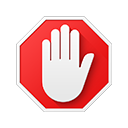
Traders work on the floor of the New York Stock Exchange during morning trading on April 07, 2025 in New York City.
Michael M. Santiago | Getty Images
The Dow Jones Industrial Average fell for a third day following President Donald Trump's tariff rollout, with the president threatening even higher rates against China on Monday.
The session was a wild one as traders tried to speculate when the market would bottom from Trump's tariff turmoil, with the Dow posting its largest intraday point swing ever recorded.
Trading volume also reached its highest level in at least 18 years, with markets trading about 29 billion shares. That surpassed Friday's volume of 26.77 billion shares, as well as the 10-day average volume of 16.94 billion shares.
- The Dow Jones Industrial Average dropped 349.26 points, or 0.91%, to close at 37,965.60. The 30-stock average had fallen more than 1,700 points during its Monday session low. It then swung 2,595 points from low to high, in a record reversal.
- The S&P 500 shed 0.23% to end at 5,062.25. The broad market average was down 4.7% at the lows of the session. It briefly entered bear market territory during the session, but was last off nearly 18% from its recent high.
- The Nasdaq Composite inched higher by 0.10% to settle at 15,603.26. Investors stepped in to buy some megacap tech stocks such as Nvidia and Palantir. At its low in the session, the tech-heavy index was off more than 5%.
Stocks mounted a short-lived rally at one point that took the Dow Industrials into positive territory. Speculation of some sort of tariff pause circulated on social media, contributing to the pop. The White House, however, told CNBC that any talk of a 90-day pause was "fake news" and major averages retreated once again.

Dow intraday
The S&P 500 has lost more than 10% the last three sessions in its worst stretch since the outbreak of Covid in 2020. Despite the sell-off, the White House has remained defiant, reiterating that the set of shockingly high tariffs unveiled Wednesday evening would take effect April 9, as scheduled. China retaliated on Friday and other countries are readying their own counter-tariffs.
Trump threatened Beijing on Monday with even higher tariffs via Truth Social: "If China does not withdraw its 34% increase above their already long term trading abuses by tomorrow, April 8th, 2025, the United States will impose additional tariffs on China of 50%, effective April 9th. Additionally, all talks with China concerning their requested meetings with us will be terminated!"
Trump also reiterated to reporters later Monday that no pause in the tariff plan was being assessed.
"The president is losing the confidence of business leaders around the globe...this is not what we voted for," wrote Bill Ackman, billionaire head of Pershing Square, on X. "The President has an opportunity on Monday to call a time out and have the time to execute on fixing an unfair tariff system. Alternatively, we are heading for a self-induced, economic nuclear winter, and we should start hunkering down."
The administration said at least 50 nations had reached out to start negotiations. Vietnam has offered already to cut tariffs on the U.S. to zero, according to Trump, but trade advisor Peter Navarro told CNBC on Monday that wasn't enough and that "it's the non-tariff cheating that matters." This suggests negotiations could be drawn out longer than Wall Street would like.
Fears grew on the Street that the sell-off would feed on itself with hedge funds forced to sell down equities and other risky assets to raise cash needed meet margin calls. The CBOE Volatility Index, Wall Street's fear gauge, surged as high as the 60 level Monday, an extreme threshold seen mostly only during bear markets.
"Margin calls are going out as we speak," said Chris Rupkey chief economist at FWDBONDS. "For a third straight day investors in U.S. equity markets have turned (a) huge thumbs down on the White House Liberation Day tariffs which have rocked Wall Street."
Apple shares closed 3.7% lower after Trump's threat to double-down on China tariffs. The iPhone maker has lost nearly $640 billion in market cap over the past three trading days.











